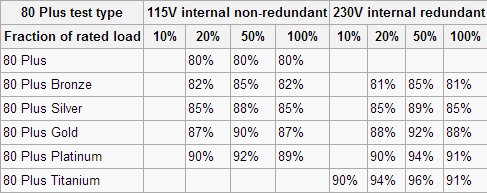Lepa G1000-MA Semi Modular Power Supply Review
Ryan Martin / 11 years ago
Voltage Regulation
To test voltage regulation we load the power supply to five different load scenarios that give an equal spread of load across every single rail. So that means 20% on all rails, 40% on all rails and so on. We then calculate the average deviance of each rail from its expected voltage.

The Lepa G1000W doesn’t have the tightest voltage regulation we’ve ever seen but to have +-2% on all rails is very impressive. The Lepa G1000W does a very good job indeed.
Power Efficiency
Power efficiency is measured by calculating actual supplied wattage divided by the wattage drawn at the wall/plug, multiplied by 100 to give a percentage. We then compare that to the particular 80 Plus certification the company claims to see if it meets that. You can see the 80 Plus certifications below, we always test 230v power supplies.


The Lepa G1000 power supply conforms to its 80 Plus Gold specification right on the money with it being slightly more efficient than it needs to be at 20 and 100% loads.
Power Factor Correction
Power Factor Correction is the ratio of the real power flowing to the load, to the apparent power in the circuit. The aim of PFC is to make the load circuitry that is power factor corrected appear purely resistive (apparent power equal to real power). In this case, the voltage and current are in phase and the reactive power consumption is zero. The closer the number to one the better as this allows the most efficient delivery of electrical power (Source – Wikipedia).

The Lepa G1000W delivers very high levels of PFC and is definitely worthy of its status as a high end unit.



















